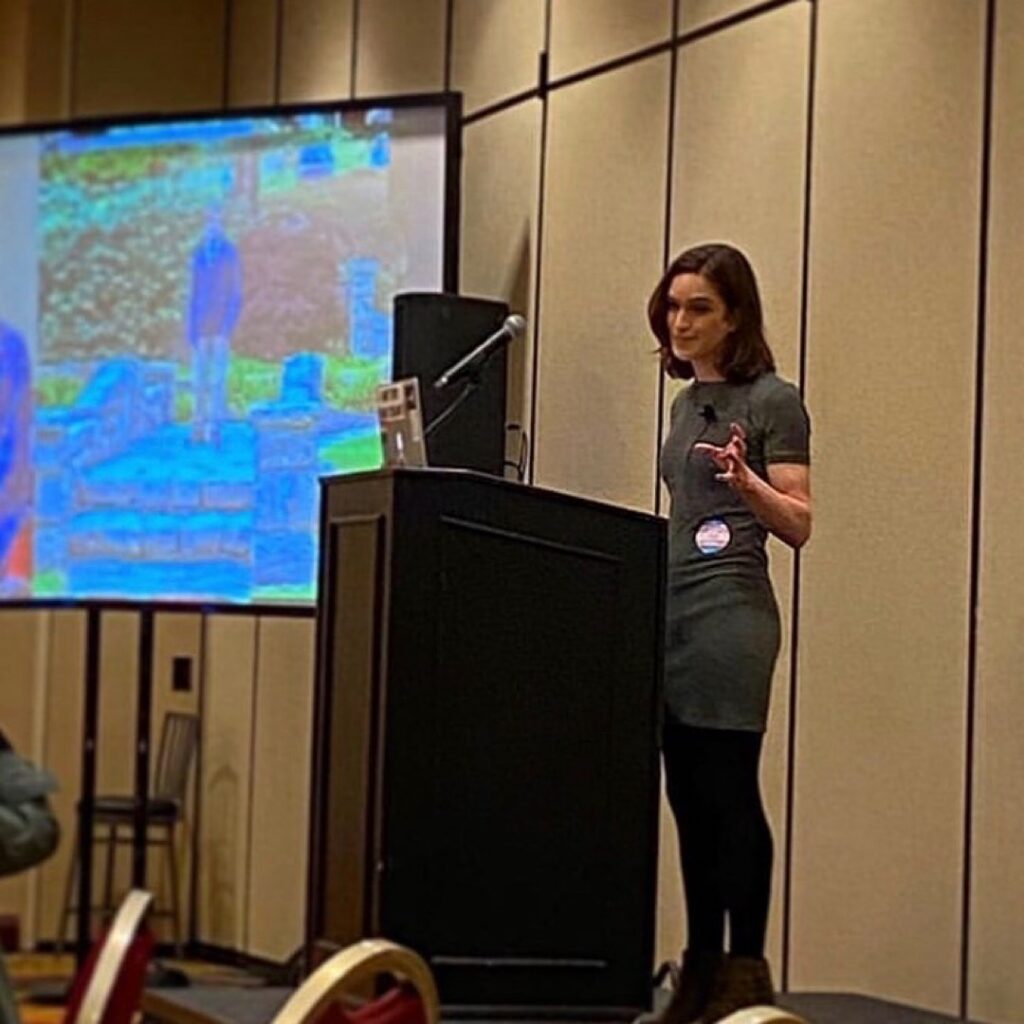Group Facilitation and Public Speaking
Selected Topics
trans 101,
Language and Key Concepts
ally vs. accomplice,
On Showing Up With Action for Transgender People
the shame problem,
Honing in on Intrinsic Motivators
making brave spaces,
Generative Conflict and the Path to Growth
Transgender at work,
What's Your Role in the Movement?
keynote,
Silence is Complicity: On Surviving Anti-Trans Therapeutic Treatment
HR Track,
Trans Your Policy: On Making Employees Feel Safe, Seen, and Supported
3-Pronged Approach to Lasting Change
personal connection,
By sharing my story, audiences begin forming threads of empathy with trans experiences. By connecting with each other, attendees find partners in change among their colleagues.
tested tools,
help audiences better understood what needs to change, and how they can be part of the solution for transgender communities.
relinquishing shame,
and identifying what intrinsically drives them to make the world a better place empowers audiences to be a part of the solution long past our time together.
Example: Workplace Training
Transgender at Work: What's Your Role in the Movement?
Often we're told that there's one way to show up for marginalized people—and if we don't call our congresspeople every day and show up to every protest, we're somehow bad allies.
In this 75 minute session, attendees ask themselves: how would it look for each of us to apply our unique strengths and skills to liberation movements, rather than being Cookie Cutter Allies?
Testimonial
"On July 21st, 2022, Arielle was a part of Cold Spring Harbor Laboratory’s new speaker series, frameSHIFT, in which social and cultural sides of working at an academic research institute are examined. They presented on how individual changemakers and allies play a crucial role in fighting for a future where transgender people are not just included, but also centered, prioritized, and wholly respected in the workforce. Arielle also facilitated a discussion with the group and answered any questions that individuals had."
—Katie Raftery, Vice President of Human Resources at Cold Spring Harbor Laboratory
"Arielle provided an informative workshop for our team on the topic of 'Showing Up for Trans Employees.' They provided deep insights into the issues facing transgender individuals in the workplace and practical strategies to create a more inclusive and welcoming workplace culture. Our team left feeling more empathetic, empowered, and engaged on the topic."
—Beverly Neubauer, Senior HR Business Partner, Allen Institute
Example: Keynote
Silence is Complicity: On Surviving Anti-Trans Therapeutic Treatment
At the 2020 Gender Education and Demystification Symposium (GEMS), I shared about my experience as a client in a residential treatment center.
Rather than leading with my hurt and anger, I held a mirror up to therapists in the troubled teen industry—not with the intention of shaming them, but rather to motivate them to do better.
I closed with ways therapists could have made me feel safer—and ways that therapists currently working with trans clients can do so now.

